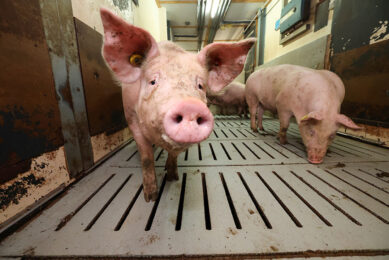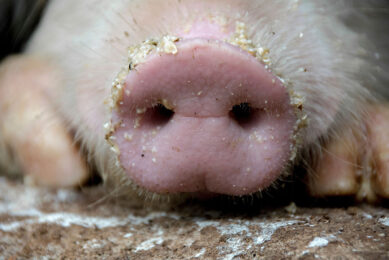Aarhus University: Pigs in long distance transport to be unloaded for break or not?
Is it best for a pig to be unloaded from the transport vehicle for a break in its long distance journey or should it remain on the vehicle until it reaches its final destination? Scientists have monitored pigs to provide some answers.
According to regulations, pigs transported over long distances must be unloaded from the transport vehicle and herded into a resting station at the latest after 24 hours of transportation. Once unloaded, they must stay in the resting station for another 24 hours before they are permitted to continue their journey. The question is whether or not this is the best solution for the pigs.
Scientists from the Faculty of Agricultural Sciences, Aarhus University, have tried to find an answer to the question by studying what pigs get up to during the driving time and during the rest periods. The study included video surveillance of the pigs during their transport.
The results of the study show that with regard to the pigs’ resting behaviour and several physiological reactions there are only limited differences between pigs that remained in the vehicle during their break and pigs that were unloaded for their break.
Pigs on the go
The pigs in the study were split in two groups. One group was transported for more than 4,000 km over a period of almost five days. The transportation took place in three stages that were interrupted by two 24-hour breaks. One of the pig groups remained on the upper floor of the transport vehicle during the breaks while the other group was unloaded from the lower floor of the vehicle and herded into pens in a resting station.
The pigs in the study were split in two groups. One group was transported for more than 4,000 km over a period of almost five days. The transportation took place in three stages that were interrupted by two 24-hour breaks. One of the pig groups remained on the upper floor of the transport vehicle during the breaks while the other group was unloaded from the lower floor of the vehicle and herded into pens in a resting station.
The pigs had approximately 0.8m2 per pig at their disposal in the vehicle and in the resting station. The pigs were mixed at the beginning of their journey but were thereafter kept in stable groups.
Apart from the first couple of hours of the journey the pigs spent most of their time lying down and there was no difference between the groups. During the breaks the pigs were inactive for about nine to twelve hours during the night and they drank more or less no water during these periods.
The scientists recorded the pigs’ behaviour, physiology, clinical health, body weight, and water consumption. They also measured air temperature, humidity and CO2 content as well as vehicle movements.
The results
The results indicate that if the transport vehicle is equipped properly, then it is beneficial for the pigs to remain in it during the breaks. Unloading them at a resting station often subjects the pigs to stress factors such as the actual unloading and re-loading process, a new environment, and a new social environment at the resting station, where they are typically mixed with other pigs.
The results indicate that if the transport vehicle is equipped properly, then it is beneficial for the pigs to remain in it during the breaks. Unloading them at a resting station often subjects the pigs to stress factors such as the actual unloading and re-loading process, a new environment, and a new social environment at the resting station, where they are typically mixed with other pigs.
There were no significant indications that the pigs’ reactions to being transported increased with repeated transportation. The only clinical symptoms were cuts and scratches that came about during the first day’s battles to find a new rank order.
There were indications that the pigs were slightly dehydrated, especially in the groups that remained in the transport vehicle during the breaks. This proves how important it is to have drinking facilities in the vehicle that are easy for the pigs to find and use.
The project was financed by the Pig Levy Fund, Aarhus University, and the Ministry of Food, Agriculture and Fisheries.
For more information contact: Head of research unit Lene Munksgaard, Department of Animal Health and Bioscience, telephone: +415 8999 1312, email: Lene.Munksgaard@agrsci.dk
Source: Aarhus university
Join 18,000+ subscribers
Subscribe to our newsletter to stay updated about all the need-to-know content in the pigsector, three times a week. Beheer
Beheer










 WP Admin
WP Admin  Bewerk bericht
Bewerk bericht